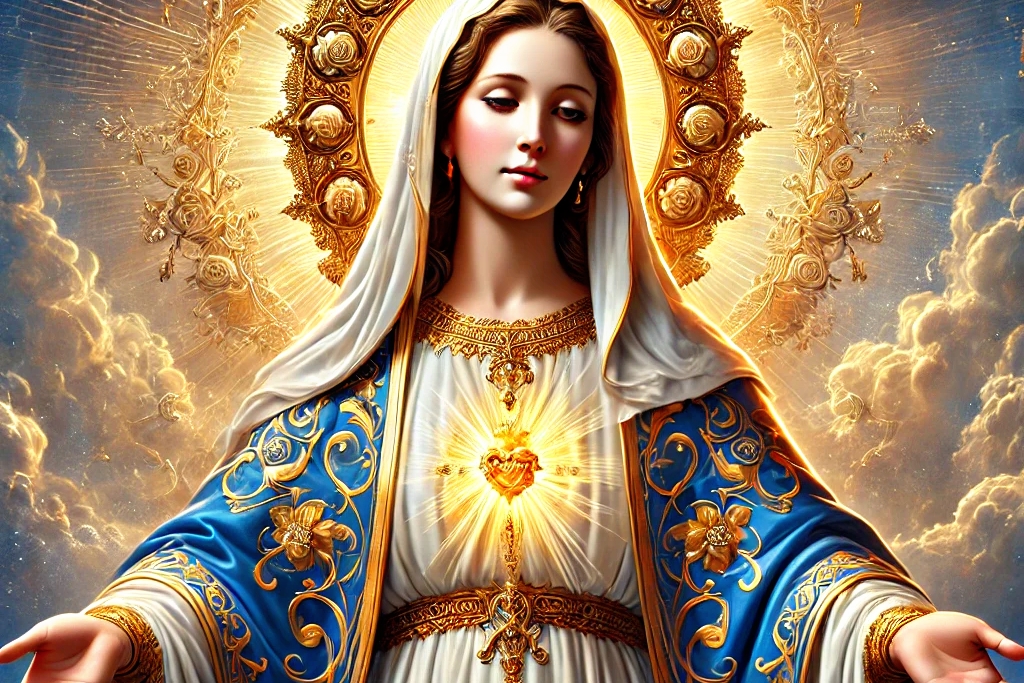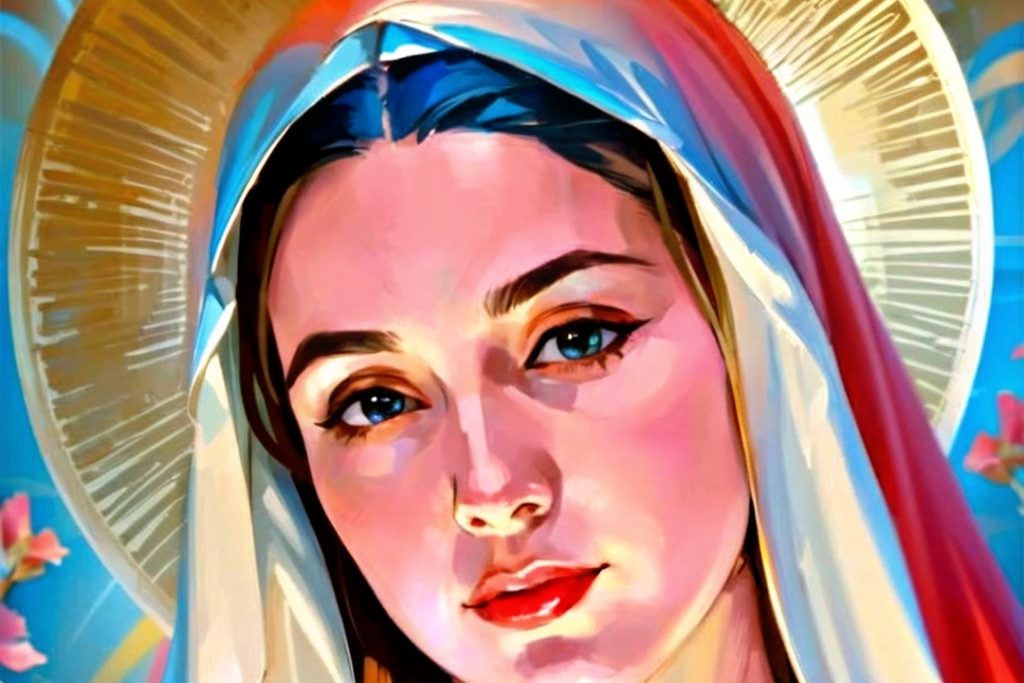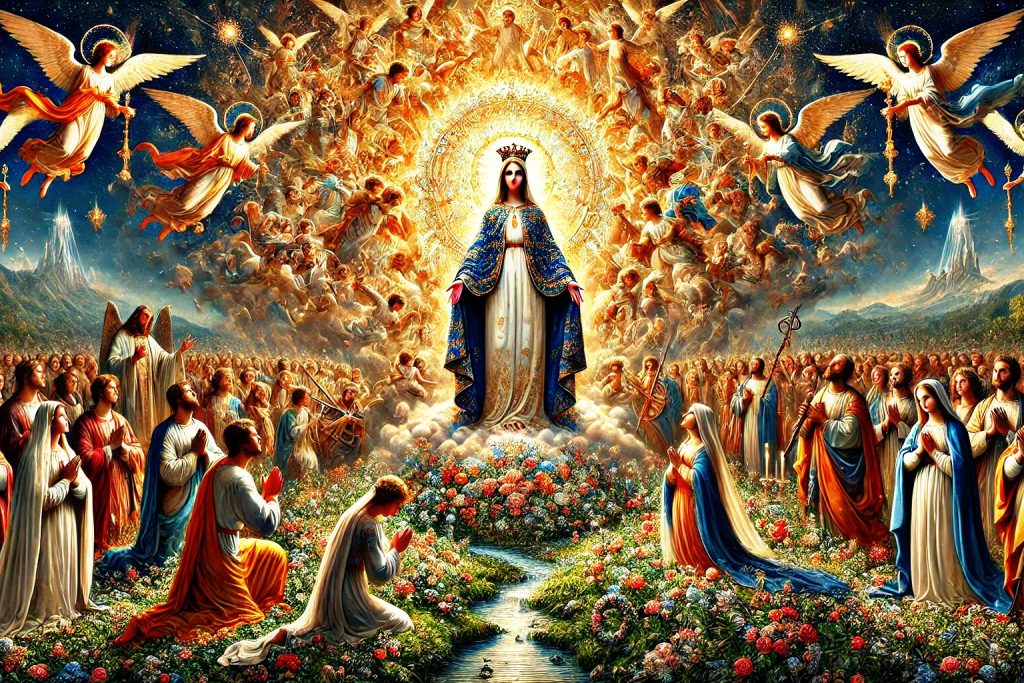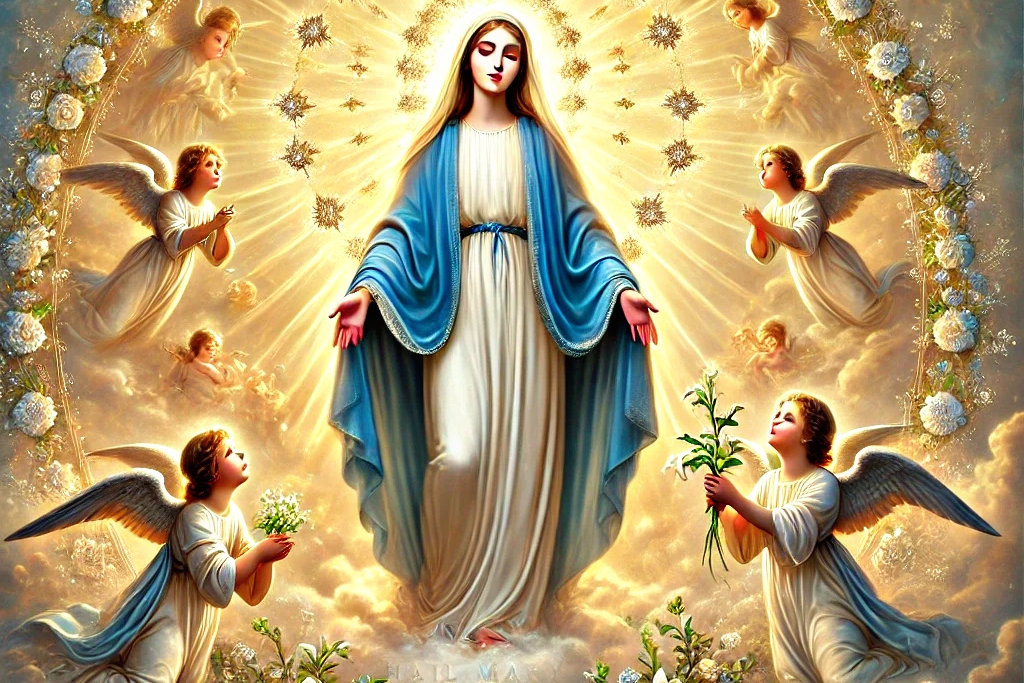Saint Mary, often referred to as the Virgin Mary or the Blessed Mother, stands as one of the most revered and iconic figures in Christianity. Her story transcends religious texts to inspire countless works of art, music, and devotion. Exploring the life and legacy of Saint Mary is not merely an exercise in theology; it is a journey into the heart of faith, love, and the human experience. This article delves deeply into all aspects of Saint Mary, focusing on her life, her role in Christianity, and her cultural significance.
The Life of Saint Mary: From Humble Beginnings to Sacred Destiny

Saint Mary’s life began in humble circumstances in Nazareth, a small town in Galilee. While much of her early life is not detailed in the Bible, tradition suggests that she was born to Joachim and Anne, devout Jews who had prayed fervently for a child. Mary’s upbringing was likely steeped in the faith and customs of her people, preparing her for the extraordinary role she would play.
The pivotal moment in Saint Mary’s life came during the Annunciation, as described in the Gospel of Luke. The angel Gabriel appeared to her, announcing that she had been chosen to bear the Son of God. Despite the immense responsibility and potential for social ostracism, Saint Mary responded with humility and faith, saying, “Behold the handmaid of the Lord; be it unto me according to thy word” (Luke 1:38). This act of submission to God’s will is one of the most celebrated moments in Christian theology.
Saint Mary in Scripture: A Central Figure in the New Testament

Saint Mary’s significance is woven throughout the New Testament, where she is present at key moments in Jesus’s life. From the Nativity to the Crucifixion and Resurrection, her unwavering faith and maternal love serve as a model for all believers.
The Nativity
The birth of Jesus in Bethlehem is one of the most iconic scenes in Christianity, and Saint Mary’s role as the mother of the Messiah is central. Her journey to Bethlehem with Joseph, her husband, and the humble conditions of Jesus’s birth in a manger emphasize her humility and obedience to God’s plan. The image of Saint Mary cradling the infant Jesus has become a universal symbol of maternal love and divine grace.
The Wedding at Cana
Saint Mary is also a key figure in Jesus’s first miracle, the turning of water into wine at the wedding in Cana (John 2:1-12). It was her intercession that prompted Jesus to act, showcasing her role as an advocate for humanity. This moment is often cited to illustrate Saint Mary’s influence and her compassionate concern for others.
The Crucifixion
One of the most poignant moments in Saint Mary’s story occurs at the foot of the cross. As Jesus suffers and dies, she remains by his side, embodying the ultimate expression of maternal love and sorrow. Her presence at this moment has inspired countless meditations and devotions, particularly in the form of the Seven Sorrows of Mary.
The Early Church
After Jesus’s resurrection and ascension, Saint Mary continued to play a vital role in the early Christian community. The Acts of the Apostles describes her as being present with the disciples at Pentecost, where the Holy Spirit descended upon them (Acts 1:14). This highlights her role not only as the mother of Jesus but also as a spiritual mother to the Church.
Saint Mary in Christian Doctrine and Theology

The theological significance of Saint Mary has been a subject of contemplation and debate throughout Christian history. Several key doctrines emphasize her unique role in salvation history.
The Immaculate Conception
The Catholic Church teaches that Saint Mary was conceived without original sin, a doctrine known as the Immaculate Conception. This belief underscores her purity and her special place in God’s plan. While not explicitly mentioned in Scripture, the doctrine is rooted in interpretations of passages like Luke 1:28, where Gabriel calls her “full of grace.”
The Perpetual Virginity
Saint Mary’s perpetual virginity is another central belief in Christianity, held by both Catholic and Orthodox traditions. This doctrine asserts that she remained a virgin before, during, and after the birth of Jesus, emphasizing her singular dedication to God.
The Assumption
The Assumption of Saint Mary, celebrated in both Catholic and Orthodox traditions, teaches that she was taken body and soul into heaven at the end of her earthly life. This event highlights her unique role in salvation history and her close union with God.
Saint Mary’s Global Influence: Devotion Across Cultures
Devotion to Saint Mary transcends cultural and geographic boundaries, making her one of the most universally recognized figures in history. Her image and story have been adapted to reflect the values and traditions of diverse communities.
Marian Apparitions
One of the most remarkable aspects of Mary’s influence is the phenomenon of Marian apparitions. These are reported appearances of Mary to individuals or groups, often accompanied by messages of hope, repentance, and devotion. Famous apparitions include:
- Our Lady of Guadalupe (Mexico): In 1531, Mary appeared to Juan Diego, an indigenous man, leaving an image of herself imprinted on his cloak. This event is credited with the mass conversion of indigenous peoples to Christianity in the Americas.
- Our Lady of Lourdes (France): In 1858, Mary appeared to Bernadette Soubirous, a young peasant girl, instructing her to pray and build a church. Lourdes has since become a major pilgrimage site, known for its miraculous healings.
- Our Lady of Fatima (Portugal): In 1917, Saint Mary appeared to three shepherd children, delivering messages of peace and urging prayer for the world.
These apparitions have strengthened devotion to Mary and have become central to Catholic spirituality.
Saint Mary in Art and Music

Saint Mary’s influence on art and music is unparalleled. From the earliest Christian mosaics to Renaissance masterpieces, her image has inspired countless works. Artists such as Michelangelo, Leonardo da Vinci, and Botticelli have depicted her with grace and reverence.
In music, compositions like Franz Schubert’s Ave Maria and Gregorian chants dedicated to Mary have become timeless expressions of devotion. These works capture the beauty and mystery of her role in the divine plan.
Saint Mary in Modern Times: A Symbol of Hope and Resilience
Even in the modern era, Saint Mary remains a powerful symbol of hope and resilience. Her story continues to inspire individuals facing challenges, offering a model of faith and perseverance. In times of crisis, people turn to Mary through prayers like the Rosary, seeking her intercession and comfort.
Her universal appeal makes her a unifying figure in a divided world. Whether as a religious icon, a cultural symbol, or a source of personal inspiration, Mary’s legacy endures, touching the hearts of millions.
Conclusion: The Enduring Legacy of Saint Mary
To understand Mary is to explore a life filled with grace, humility, and profound faith. Her story is not just about her role as the mother of Jesus but about her example as a believer, a mother, and a spiritual guide. Saint Mary’s influence extends far beyond the pages of Scripture, shaping art, culture, and the lives of those who look to her for inspiration.
Saint Mary remains a beacon of hope and a symbol of divine love. Her life and legacy invite us to reflect on our own faith journeys and to find strength in the example she set. In celebrating Mary, we honor not just a historical figure but a timeless embodiment of grace and compassion.

